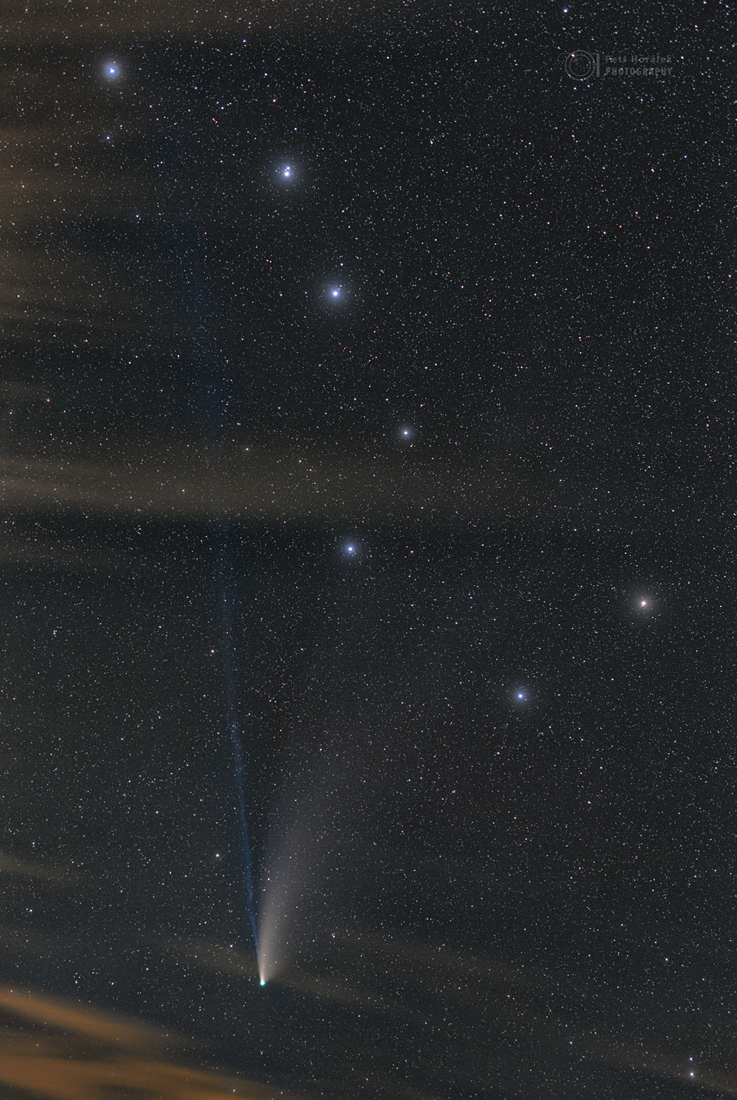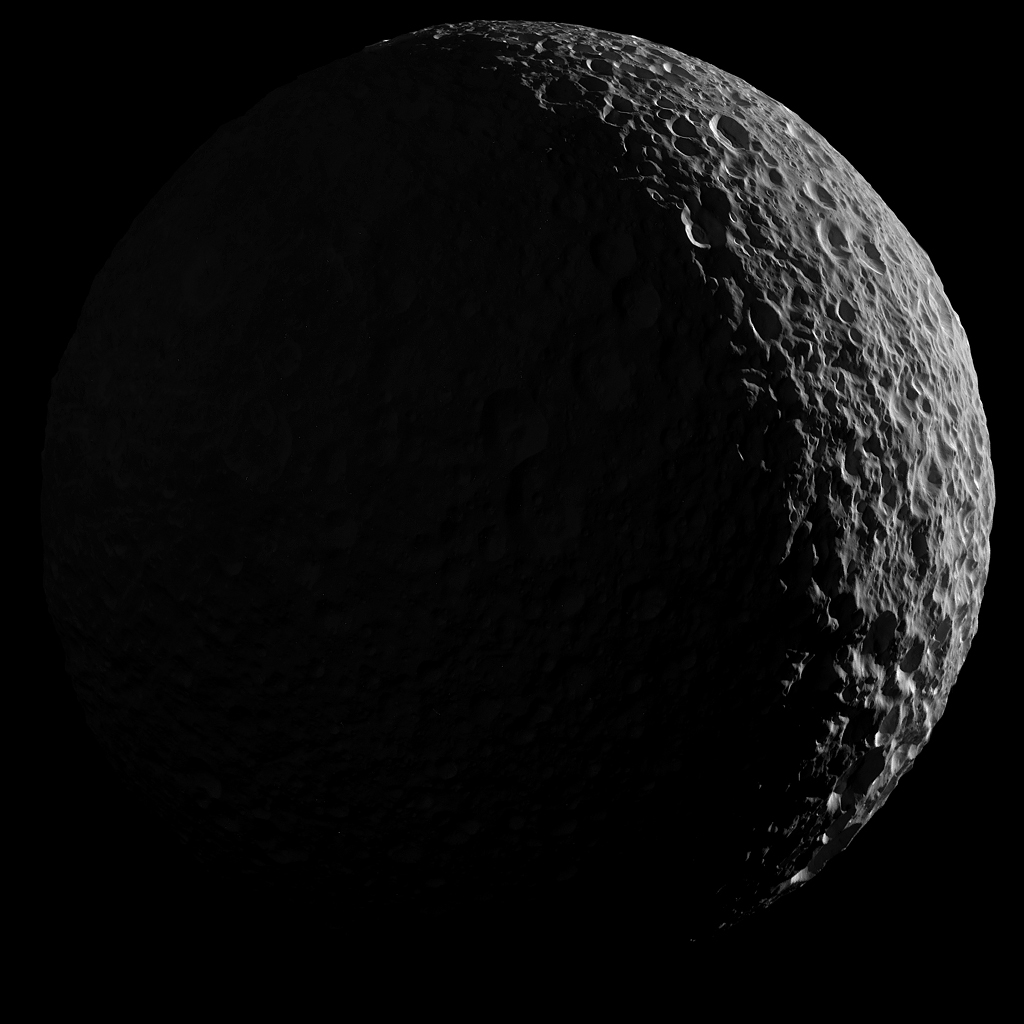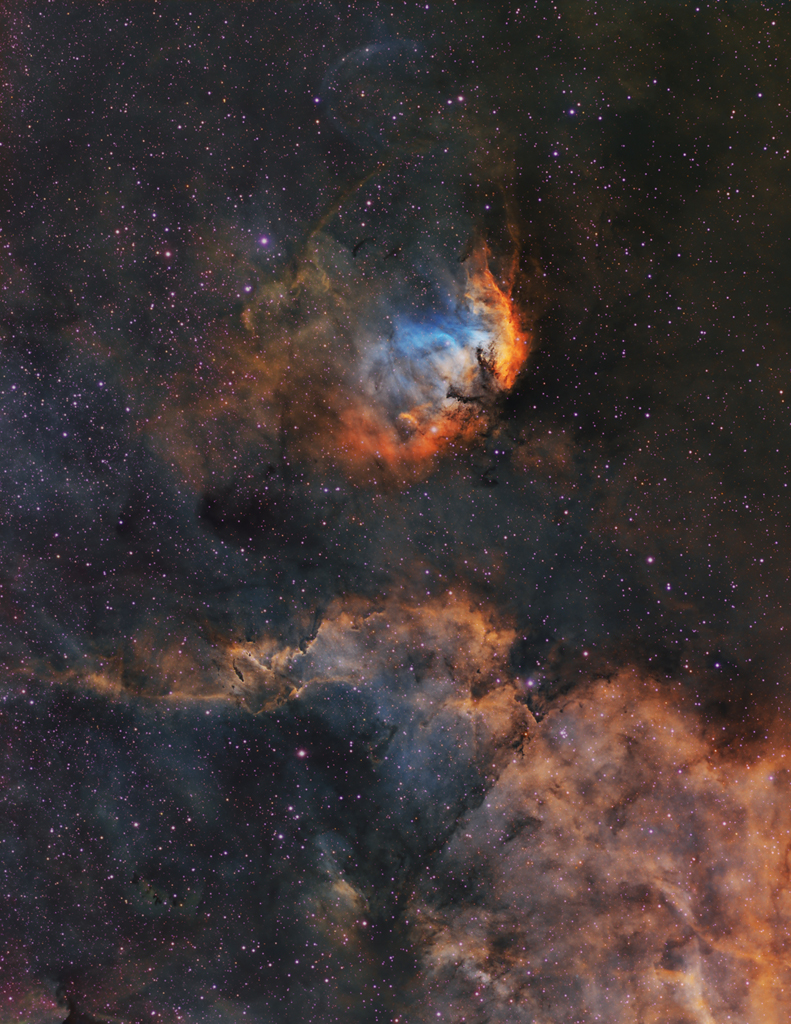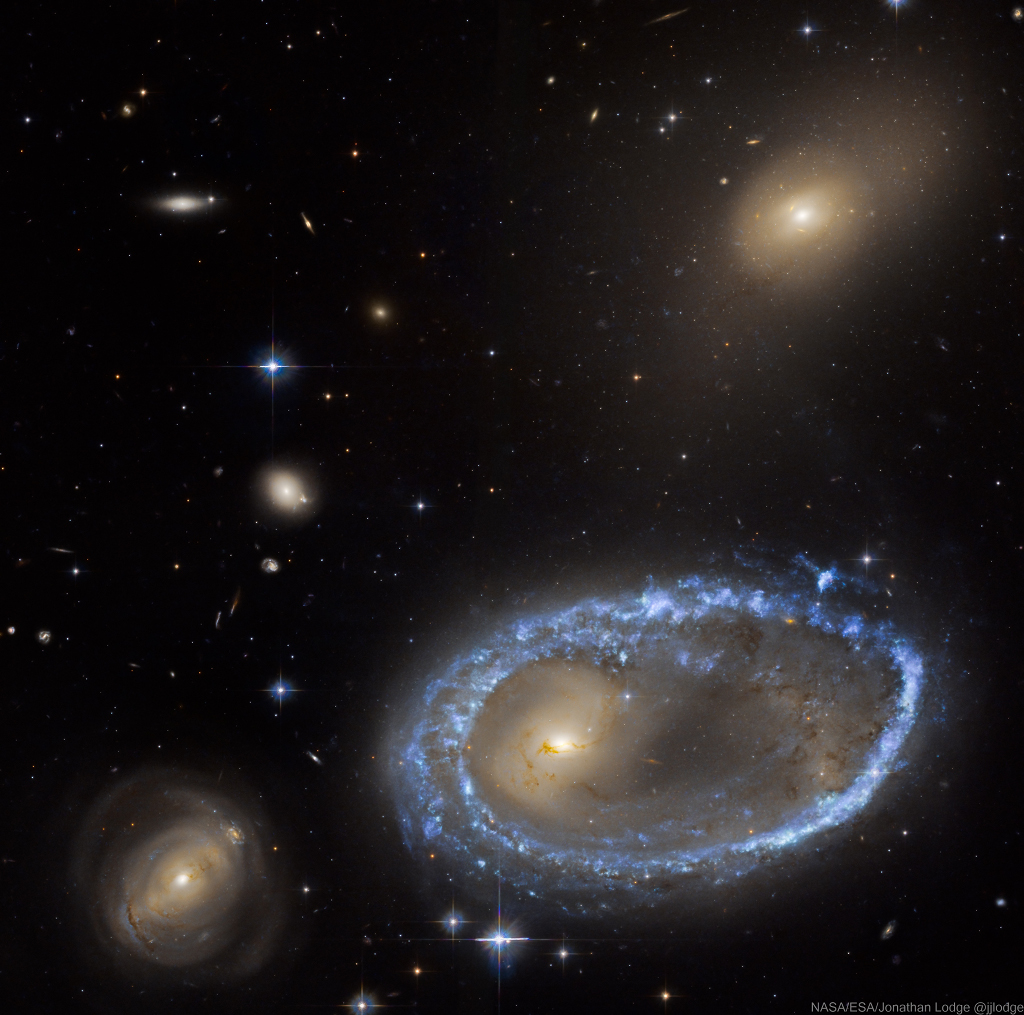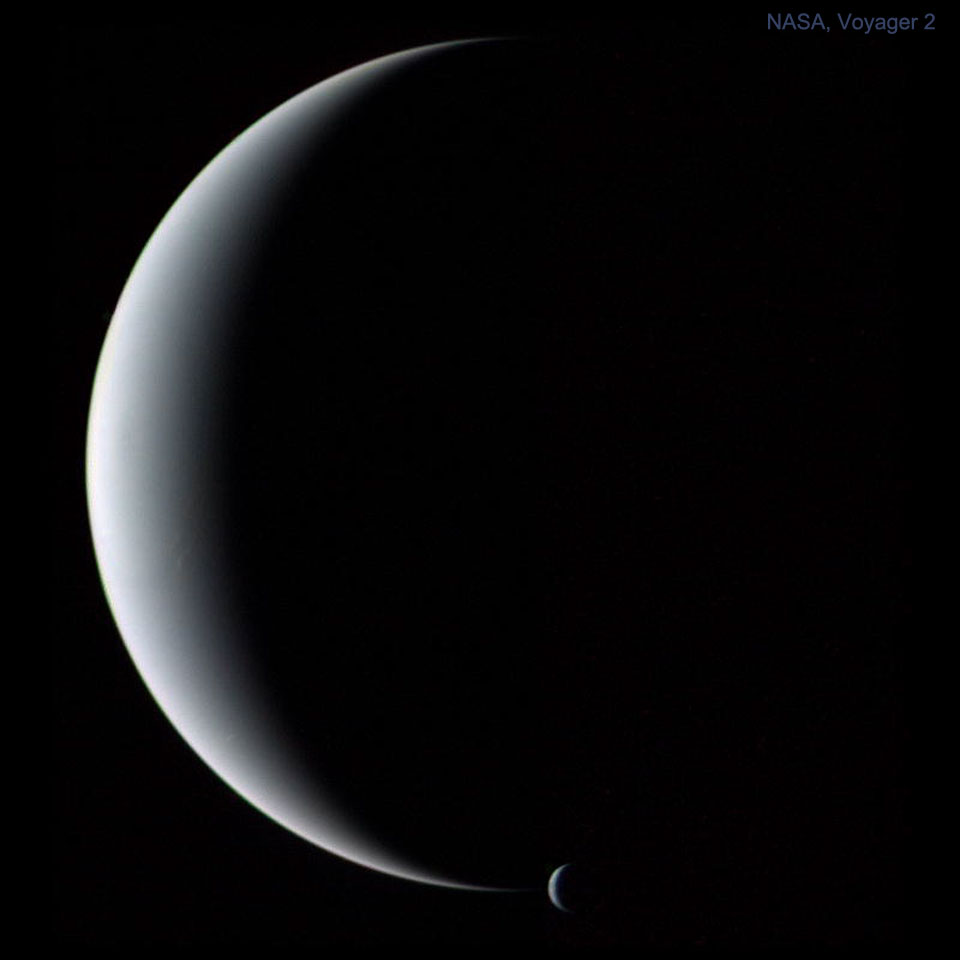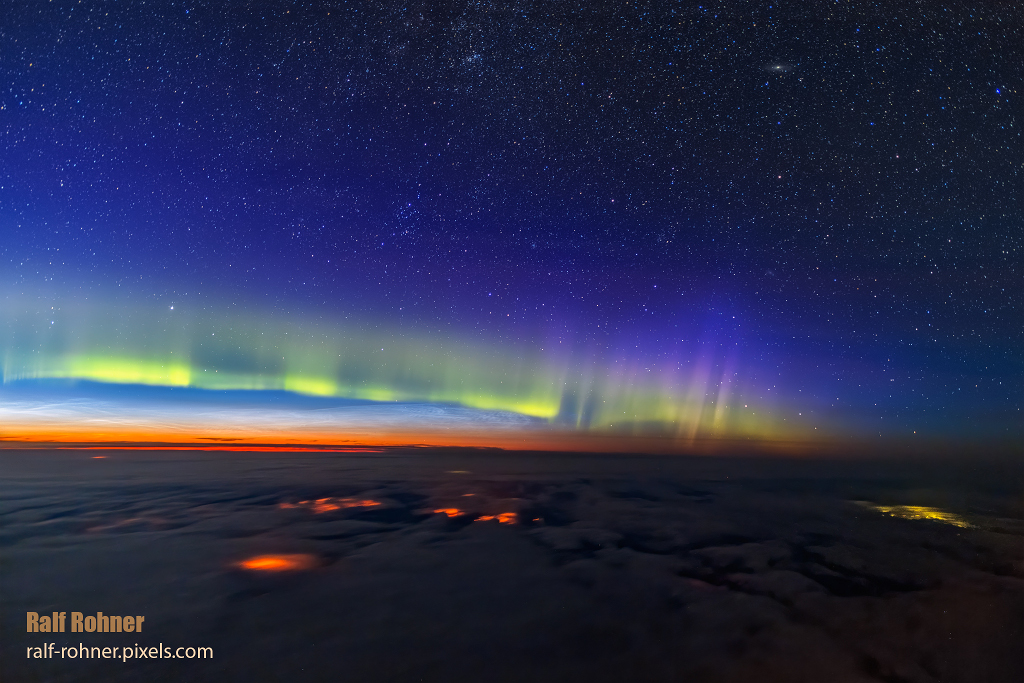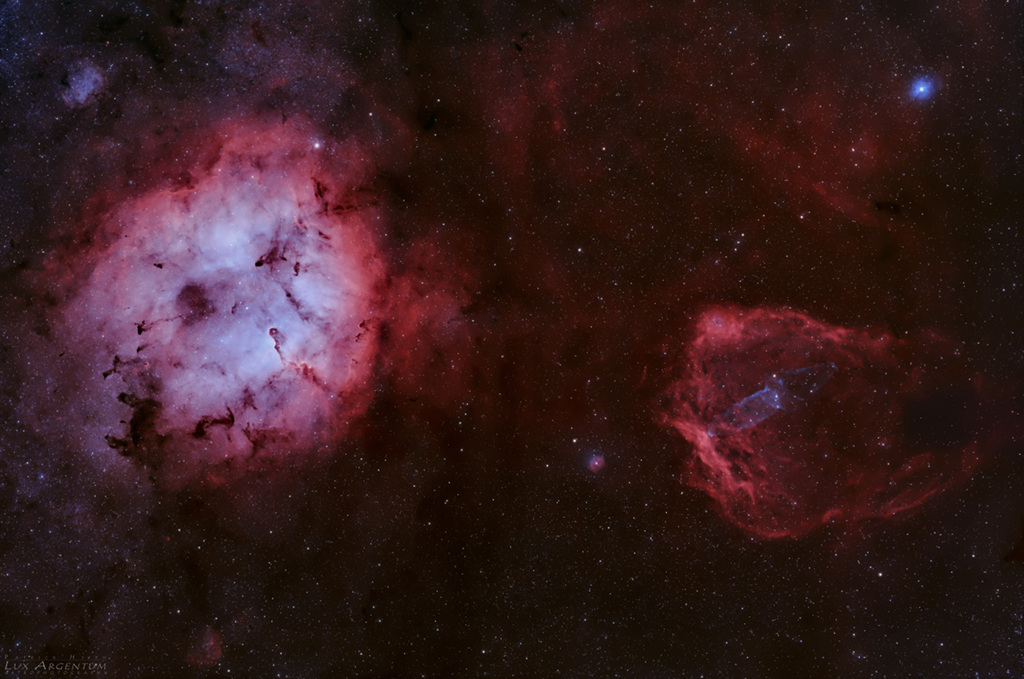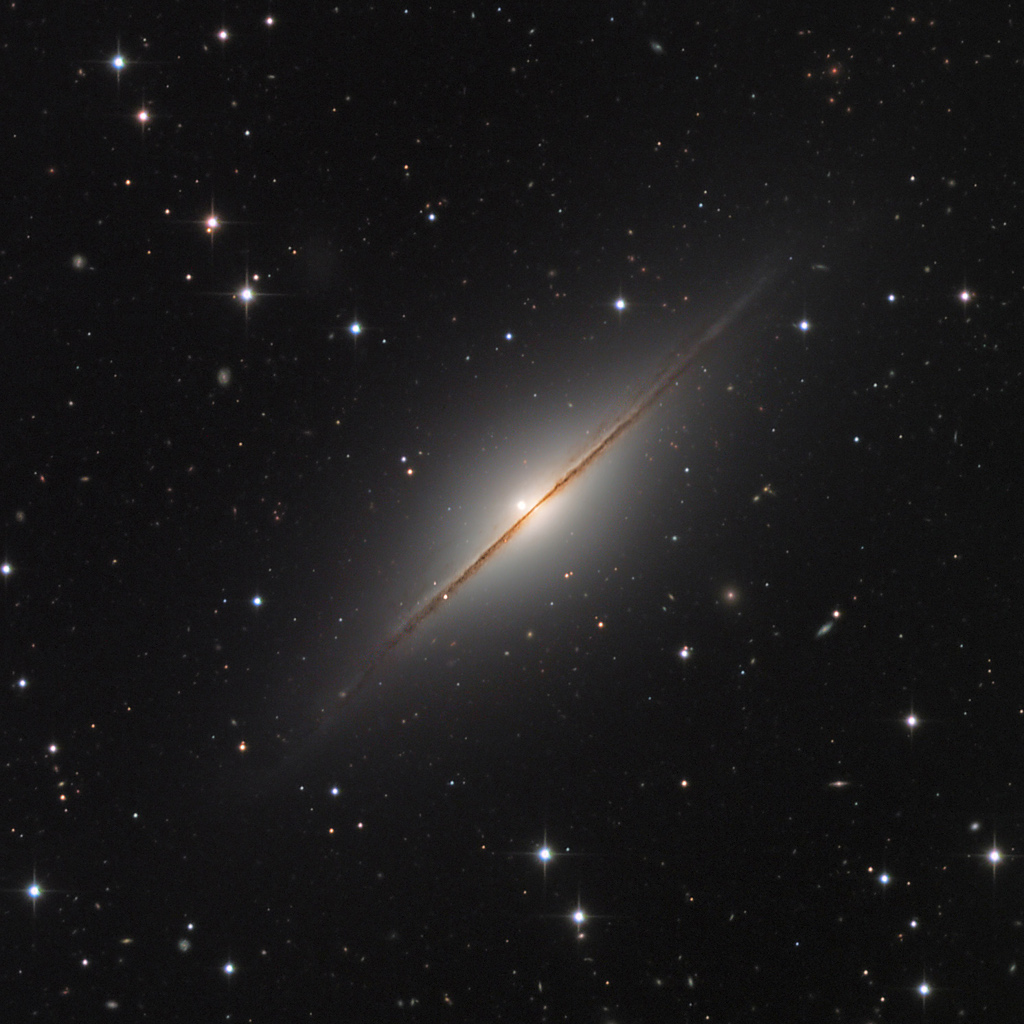Le début du 21ème siècle : le transport aérien c'est tellement développé que certaines zones sont saturées. Sur le plan militaire, l'avion n'est qu'un des composants des systèmes de l'armée et le rôle des pilotes se réduit au profit des systèmes automatiques. 1. Les premiers planeurs. Le premier homme à avoir plané en dirigeant son avion s'appelle Otto Lilienthal, il a effectué plus de 2000 vols avec sa machine en sautant d'une colline. Les premiers vols fait à partir d'un avion muni d'un gouvernail qui permettait de contrôler la trajectoire de celui-ci ont été réalisés par les frères Wright.
Nombre total de pages vues
31/07/2021
AERONAUTIQUE - Histoire de l'aviation - (2)
ASTRONOMY - Remembering NEOWISE
2021 July 31
Image Credit & Copyright: Petr Horalek / Institute of Physics in Opava
Explanation: It was just last July. If you could see the stars of the Big Dipper, you could find Comet NEOWISE in your evening sky. After sunset denizens of the north could look for the naked-eye comet below the bowl of that famous celestial kitchen utensil and above the northwestern horizon. The comet looked like a fuzzy 'star' with a tail, though probably not so long a tail as in this memorable skyview recorded from the Czech Republic on July 23th, 2020, near the comet's closest approach to planet Earth. Photographs of C/2020 F3 (NEOWISE) often did show the comet's broad dust tail and fainter but separate bluish ion tail extending farther than the eye could follow. Skygazers around the world were delighted to witness Comet NEOWISE, surprise visitor from the outer Solar System.
30/07/2021
ASTRONOMY - Mimas in Saturnlight
2021 July 30
Image Credit: Cassini Imaging Team, SSI, JPL, ESA, NASA
Explanation: Peering from the shadows, the Saturn-facing hemisphere of Mimas lies in near darkness alongside a dramatic sunlit crescent. The mosaic was captured near the Cassini spacecraft's final close approach on January 30, 2017. Cassini's camera was pointed in a nearly sunward direction only 45,000 kilometers from Mimas. The result is one of the highest resolution views of the icy, crater-pocked, 400 kilometer diameter moon. An enhanced version better reveals the Saturn-facing hemisphere of the synchronously rotating moon lit by sunlight reflected from Saturn itself. To see it, slide your cursor over the image (or follow this link). Other Cassini images of Mimas include the small moon's large and ominous Herschel Crater.
29/07/2021
ASTRONOMY - The Tulip and Cygnus X-1
2021 July 29
Image Credit & Copyright: Carlos Uriarte
Explanation: This tall telescopic field of view looks out along the plane of our Milky Way Galaxy toward the nebula rich constellation Cygnus the Swan. Popularly called the Tulip Nebula, the brightest glowing cloud of interstellar gas and dust above center is also found in the 1959 catalog by astronomer Stewart Sharpless as Sh2-101. Nearly 70 light-years across the complex and beautiful Tulip Nebula blossoms about 8,000 light-years away, shown in a Hubble palette image that maps the glow of the nebula's sulfur, hydrogen, and oxygen ions into red, green, and blue colors. Ultraviolet radiation from young energetic stars at the edge of the Cygnus OB3 association, including O star HDE 227018, ionizes the atoms and powers the emission from the Tulip Nebula. Also in the field of view is microquasar Cygnus X-1, one of the strongest X-ray sources in planet Earth's sky. Driven by powerful jets from a black hole accretion disk, its fainter bluish curved shock front is only just visible though, directly above the cosmic Tulip's petals near the top of the frame.
28/07/2021
ASTRONOMY - Ring Galaxy AM 0644-741
2021 July 28
Image Credit: NASA, ESA, Hubble, HLA; Processing: Jonathan Lodge
Explanation: The rim of the large blue galaxy at the right is an immense ring-like structure 150,000 light years in diameter composed of newly formed, extremely bright, massive stars. AM 0644-741 is known as a ring galaxy and was caused by an immense galaxy collision. When galaxies collide, they pass through each other and their individual stars rarely come into contact. The large galaxy's ring-like shape is the result of the gravitational disruption caused by a small intruder galaxy passing through it. When this happens, interstellar gas and dust become compressed, causing a wave of star formation to move out from the impact point like a ripple across the surface of a pond. Other galaxies in the field of view are background galaxies, not interacting with AM 0644-741. Foreground spiky stars are within our own Milky Way. But the smaller intruder galaxy is caught above and right, near the top of the frame taken by the Hubble Space Telescope. Ring galaxy AM 0644-741 lies about 300 million light years away toward the southern constellation Volans.
25/07/2021
ASTRONOMY - Crescent Neptune and Triton
2021 July 25
Image Credit: NASA, Voyager 2
Explanation: Gliding silently through the outer Solar System, the Voyager 2 spacecraft camera captured Neptune and Triton together in crescent phase. The elegant picture of the gas giant planet and its cloudy moon was taken from behind just after closest approach in 1989. It could not have been taken from Earth because Neptune never shows a crescent phase to sunward Earth. The unusual vantage point also robs Neptune of its familiar blue hue, as sunlight seen from here is scattered forward, and so is reddened like the setting Sun. Neptune is smaller but more massive than Uranus, has several dark rings, and emits more light than it receives from the Sun.
24/07/2021
ASTRONOMY - The Edge of Space
2021 July 24
Image Credit & Copyright: Ralf Rohner
Explanation: Where does space begin? For purposes of spaceflight some would say at the Karman line, currently defined as an altitude of 100 kilometers (60 miles). Others might place a line 80 kilometers (50 miles) above Earth's mean sea level. But there is no sharp physical boundary that marks the end of atmosphere and the beginning of space. In fact, the Karman line itself is near the transition between the upper mesophere and lower thermosphere. Night shining or noctilucent clouds are high-latitude summer apparitions formed at altitudes near the top of the mesophere, up to 80 kilometers or so, also known as polar mesopheric clouds. Auroral bands of the northern (and southern) lights caused by energetic particles exciting atoms in the thermosphere can extend above 80 kilometers to over 600 kilometers altitude. Taken from a cockpit while flying at an altitude of 10 kilometers (33,000 feet) in the realm of stratospheric aeronautics, this snapshot captures both noctilucent clouds and aurora borealis under a starry sky, looking toward planet Earth's horizon and the edge of space.
23/07/2021
ASTRONOMY - Elephant, Bat, and Squid
2021 July 23
Image Credit & Copyright: Patrick Hsieh
Explanation: Sprawling emission nebulae IC 1396 and Sh2-129 mix glowing interstellar gas and dark dust clouds in this 10 degree wide field of view toward the northern constellation Cepheus the King. Energized by its bluish central star IC 1396 (left) is hundreds of light-years across and some 3,000 light-years distant. The nebula's intriguing dark shapes include a winding dark cloud popularly known as the Elephant's Trunk below and right of center. Tens of light-years long, it holds the raw raw material for star formation and is known to hide protostars within. Located a similar distance from planet Earth, the bright knots and swept back ridges of emission of Sh2-129 on the right suggest its popular name, the Flying Bat Nebula. Within the Flying Bat, the most recently recognized addition to this royal cosmic zoo is the faint bluish emission from Ou4, the Giant Squid nebula.
22/07/2021
ASTRONOMY - NGC 7814: Little Sombrero with Supernova
2021 July 22
Image Credit & Copyright: CHART32 Team,
Explanation: Point your telescope toward the high flying constellation Pegasus and you can find this expanse of Milky Way stars and distant galaxies. NGC 7814 is centered in the pretty field of view that would almost be covered by a full moon. NGC 7814 is sometimes called the Little Sombrero for its resemblance to the brighter more famous M104, the Sombrero Galaxy. Both Sombrero and Little Sombrero are spiral galaxies seen edge-on, and both have extensive halos and central bulges cut by a thin disk with thinner dust lanes in silhouette. In fact, NGC 7814 is some 40 million light-years away and an estimated 60,000 light-years across. That actually makes the Little Sombrero about the same physical size as its better known namesake, appearing smaller and fainter only because it is farther away. In this telescopic view from July 17, NGC 7814 is hosting a newly discovered supernova, dominant immediately to the left of the galaxy's core. Cataloged as SN 2021rhu, the stellar explosion has been identified as a Type Ia supernova, useful toward calibrating the distance scale of the universe.
ASTRONOMY - Apollo 17 at Shorty Crater
2025 December 6 Apollo 17 at Shorty Crater Apollo 17 Crew, NASA Explanation: Fifty three years ago , in December of 1972, Apollo 17 astr...

-
2022 September 26 All the Water on Planet Earth Illustration Credit: Jack Cook, Adam Nieman, Woods Hole Oceanographic Institution ; Data ...
-
2025 May 11 The Surface of Venus from Venera 14 Image Credit: Soviet Planetary Exploration Program , Venera 14 ; Processing & Copyri...


